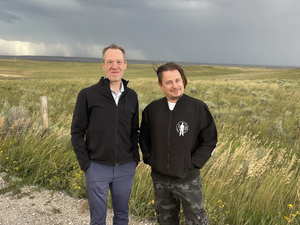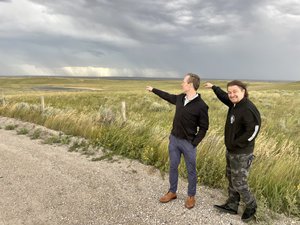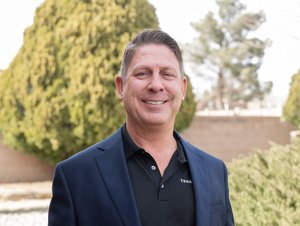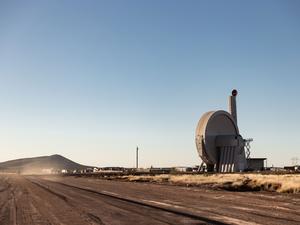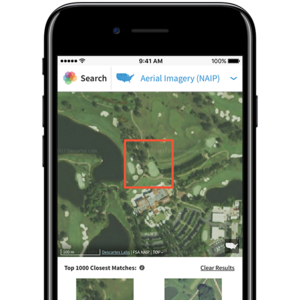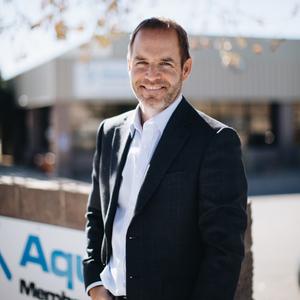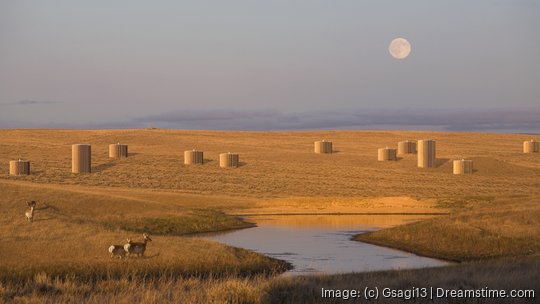
Spiritus Technologies, the Los Alamos startup that came out of stealth early last fall, said on Tuesday its first carbon capture facility — what could be the first of dozens of megaton-scale sites the company hopes to operate across the country — will be built in Central Wyoming.
Work has been ongoing on the flagship facility, dubbed Orchard One, for the past two years, Charles Cadieu, Ph.D., Spiritus' CEO, told New Mexico Inno. The startup expects Orchard One to begin removing carbon in 2026.
It'll use a type of sorbent technology first developed and spun out of Los Alamos National Laboratory by Matt Lee, Ph.D., Spiritus' co-founder and chief technology officer. That sorbet tech passively absorbs carbon from the atmosphere in a process known as direct air capture, which pulls carbon at the source of the technology, rather than at the source of emission.
Direct air capture can be a sort of a "silver bullet" climate solution, Cadieu said, but has been prohibitively expensive, with existing approaches costing between $600 to $1,000 per ton of carbon dioxide captured. Spiritus thinks its advanced sorbent tech — shaped in the form of balls that can be reused once the carbon they absorb is released — can drive that cost down to below $100 per ton.
Proving that's the case is a big part of standing up Spiritus' first facility, which the startup calls carbon orchards, Cadieu said. Spiritus wants the site, once up and running, to capture and sequester — or permanently store — up to two megatons of carbon from the atmosphere annually.
"What we want to be able to do with this flagship project in Wyoming is to begin to demonstrate that pathway to less than $100 per ton," Cadieu said. "The demonstration of this and its first commercial realization will give more confidence to stakeholders and backers to continue to invest and see that we can do it at these intended price points."
While Cadieu didn't disclose the facility's cost, he said Spiritus has been raising additional capital for its Orchard One project, beyond an initial $11 million round of funding the startup pulled in when it emerged from stealth in early September 2023. Menlo Park, California-based firm Khosla Ventures led that round, with San Francisco-based Page One Ventures and others joining.

Why Wyoming for the first facility? Cadieu said three primary reasons pulled Spiritus to the Cowboy State. One is the local workforce's expertise; he said skills from the oil and gas industry are "incredibly transferable" to operating the startup's direct air capture facility.
As well, Cadieu said the state's geology is well suited to geologic sequestration — the process by which Spiritus plans to take carbon captured using its sorbent technology and permanently store it in naturally occurring rock formations underground.
And, he pointed to Wyoming's regulatory framework related to geological storage as a third reason Spiritus picked the state for its flagship facility. Cadieu said the startup has identified the site's exact location but isn't ready yet to share that information, outside of saying the site will be in Central Wyoming.
But what about New Mexico? While Spiritus picked Wyoming for its first site, Cadieu said he expects New Mexico to house future carbon orchards.
The state has "tremendous prospects," many of which are similar to those factors that pulled Spiritus to Wyoming initially, Cadieu said. That includes well-suited geological areas throughout New Mexico and an extensive oil and gas workforce with transferable skills.
Spiritus, which is currently evaluating a pipeline of an additional two through 10 carbon orchards, focuses on land geology, access to renewable energy and local stakeholder engagement when picking a site location, Cadieu said. It expects its Orchard One facility to employ hundreds of construction workers in Wyoming during its construction and around 100 people during continuous operations.
That's an important thing to keep in mind with Spiritus' carbon orchards, Cadieu said. As opposed to solar or wind farms, which may employ hundreds during construction but require relatively little permanent employment once operational, he said Spiritus' carbon orchards could be a "net job benefit" by employing more people on a regular basis.
The Los Alamos startup, a 2024 Startup to Watch, plans to partner with local universities and organizations in Wyoming for job training ahead of Orchard One's operations, as well.
Mindy Ren, who Spiritus hired as the startup's head of carbon removal infrastructure in December, will oversee the execution of Orchard One. There are over 20 people contributing to Spiritus, which has its lab facility in Los Alamos.
